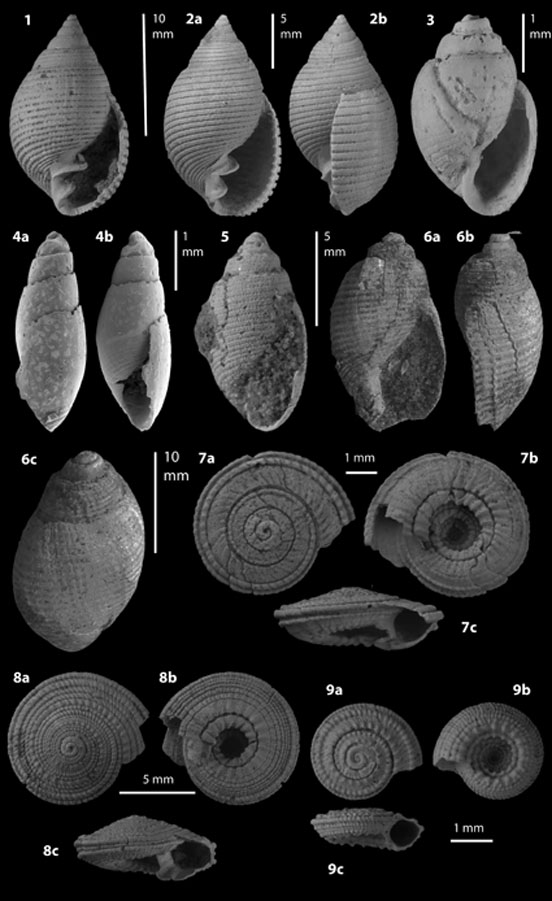
|

|
PALAEONTOS 29Price: members: 35 € ; non-members: 40 € Marquet R., Lenaerts J. & Laporte J., 2016, A systematic study of the Gastropoda (Mollusca) of the Grimmertingen Sand Member (Early Oligocene) in Belgium.(157 pages, 1 figure, 4 tables and 24 plates). ISSN: 1377-4654Summary: In this paper, the systematics of the Gastropoda of the Grimmertingen Sand Member, the earliest part of the Oligocene in Belgium, is revised. The fauna is calculated at 182 species, compared with 147 named in the work of Glibert & de Heinzelin (1954). Three species have to be removed from their list for various reasons. Nine species are new to science, but only three could be named: Parvisipho oligocaenica sp. nov., Raphitoma grimmertingenensis sp. nov. and Raphitoma neerrepenensis sp. nov. The available material of the six others was not well enough preserved for unequivocal identification: Obtusella sp. nov., Acamptogenotia sp. nov., Mangelia sp. nov., Bonellitia sp. nov., ? Tuba sp. nov. and Turbonilla sp. nov. or Acirsa sp. nov. A new name is given to one taxon: Terebellum koeneni nom. nov. The fauna of the localities in the province of Limburg is compared with those of the younger Belgian Oligocene fauna and of the European Eocene and Oligocene fauna in general. It shows little similarity with any of these faunae, except with the contemporaneous Dutch and German ones. A strong impoverishment of the fauna after these "earliest" Oligocene faunae is apparent everywhere in the North Sea Basin. The number of species in common with the Late Eocene is about the same as that with the later Oligocene. Moreover, the number of genera surviving from the Eocene into the Oligocene outnumbers the appearance of typical Oligocene genera in the Grimmertingen Sand Member, e.g. Haustator crenulatus, the most common gastropod, already occurred in the Eocene Wemmel Sand Member. The number of species within the surviving genera is more numerous than the number of species within the newly appearing Oligocene genera. This is a clear indication of the more Eocene than Oligocene character of the Grimmertingen Sand Member. Only one pteropod was found, due to the decalcification of the Grimmertingen Sand member, which did not favour the preservation of these fragile shells. |
|
ORDER INFORMATION:please contact us at: palaeontos@gmail.com |
|